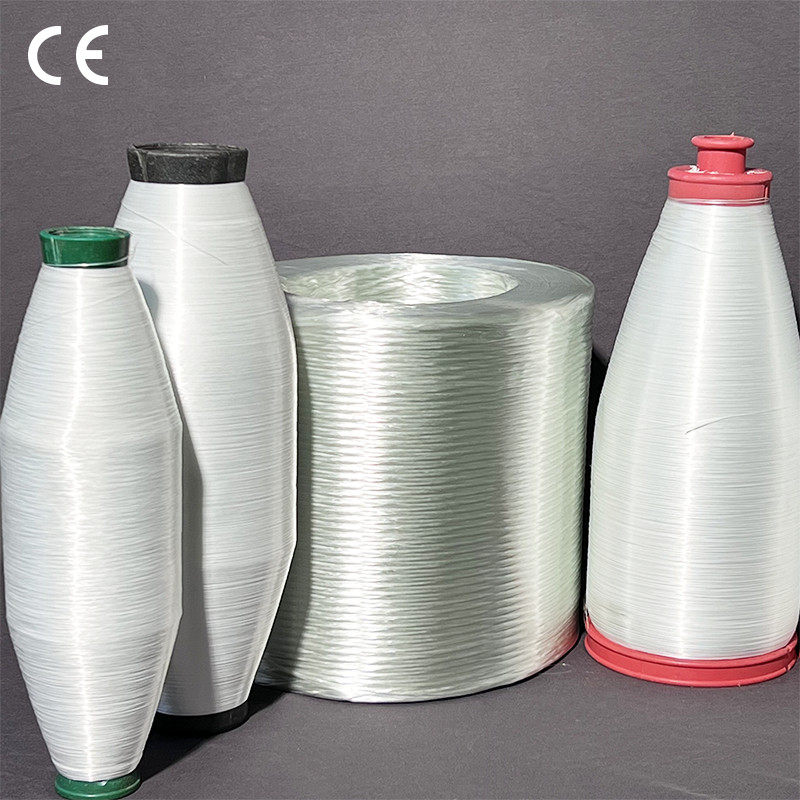Feb. 23, 2024
Glass fiber (original name in English: glass fiber or fiberglass) is an inorganic non-metallic material with excellent performance. There are many types. The advantages are good insulation, strong heat resistance, good corrosion resistance and high mechanical strength, but the disadvantage is that it is Brittle and poor wear resistance. Glass fiber is often used as reinforcing materials in composite materials, electrical insulation materials and thermal insulation materials, circuit substrates and other fields of the national economy.

Fiberglass yarn is an inorganic non-metallic material with excellent performance. There are many types. The advantages of fiberglass yarn are good insulation, strong heat resistance, good corrosion resistance and high mechanical strength. However, the disadvantage is that it is brittle and has poor wear resistance. Poor, glass fiber yarn is made of glass balls or waste glass as raw materials through high-temperature melting, drawing, winding, weaving and other processes. The diameter of its single filament ranges from a few microns to more than 20 microns, which is equivalent to one 1/20-1/5 of a hair, each fiber bundle is composed of hundreds or even thousands of single filaments.
1. Good electrical insulation performance and high temperature resistance.
2. High tensile strength, good heat resistance and corrosion resistance.
3. Non-flammable and good chemical stability.
Glass fiber yarn is mainly used as electrical insulation material, industrial filter material, anti-corrosion, moisture-proof, heat insulation, sound insulation and shock absorption material. It can also be used as reinforcing material. Glass fiber yarn is used much more widely than other types of fibers to make reinforcements. Plastics, fiberglass yarn or reinforced rubber, reinforced gypsum, reinforced cement and other products. Coating glass fiber yarn with organic materials can improve its flexibility and can be used to make packaging cloth, window screens, wall coverings, covering cloths, and protective clothing. and electrical insulation and sound insulation materials.
Further reading:Twistless roving, twistless roving fabric (checkered cloth), fiberglass mats, chopped strands and ground fibers, fiberglass fabrics, combined fiberglass reinforcements, fiberglass wet-laid mats.
What does fiberglass tape yarn usually 60 yarns per 100cm mean?
This is product specification data, meaning 100 cm contains 60 yarns.
Glass yarn made of glass fiber, single yarn generally requires sizing, while filament double-strand yarn does not need to be sizing. Glass fiber fabrics are all produced in small batches. Therefore, dry sizing or sizing machines are mostly used, while beam sizing machines are not commonly used. Use starch slurry for sizing. Starch is used as a sizing agent. Just use a smaller sizing rate (about 3%). If using a beam sizing machine, some PVA or acrylic sizing can be used.
A simple way to distinguish between medium-alkali, alkali-free glass fiber and high-alkali glass fiber is to pull a single fiber yarn by hand. Generally, alkali-free glass fiber has high mechanical strength and is not easy to break, followed by medium-alkali glass fiber, and high-alkali glass fiber. Fiberglass breaks with gentle pulling. Observed with the naked eye, alkali-free and medium-alkali glass fiber yarns generally have no fuzziness, while high-alkali glass fiber yarns have a particularly serious fuzziness phenomenon, with many broken monofilaments protruding from the yarn.
Glass fiber is made of glass as raw material and processed in a molten state using various molding methods. Generally divided into continuous glass fiber and discontinuous glass fiber. The most popular ones on the market are continuous glass fibers. There are two main products of continuous glass fiber produced according to my country's current standards. One is medium-alkali glass fiber, code-named C; the other is alkali-free glass fiber, code-named E. The main difference between them is the content of alkali metal oxides. Medium-alkali glass fiber is (12±0.5)%, and alkali-free glass fiber is <0.5%. There is also a non-standard fiberglass product on the market. Commonly known as high-alkali glass fiber. Its alkali metal oxide content is above 14%. The raw materials for production are broken flat glass or glass bottles. This kind of glass fiber has poor water resistance, low mechanical strength and low electrical insulation, and is not allowed to be produced according to national regulations.
Further reading:Previous: When should I use mesh drywall tape?
Next: What are the classifications and uses of fiberglass mesh?
Related Articles
If you are interested in sending in a Guest Blogger Submission,welcome to write for us!
All Comments ( 0 )